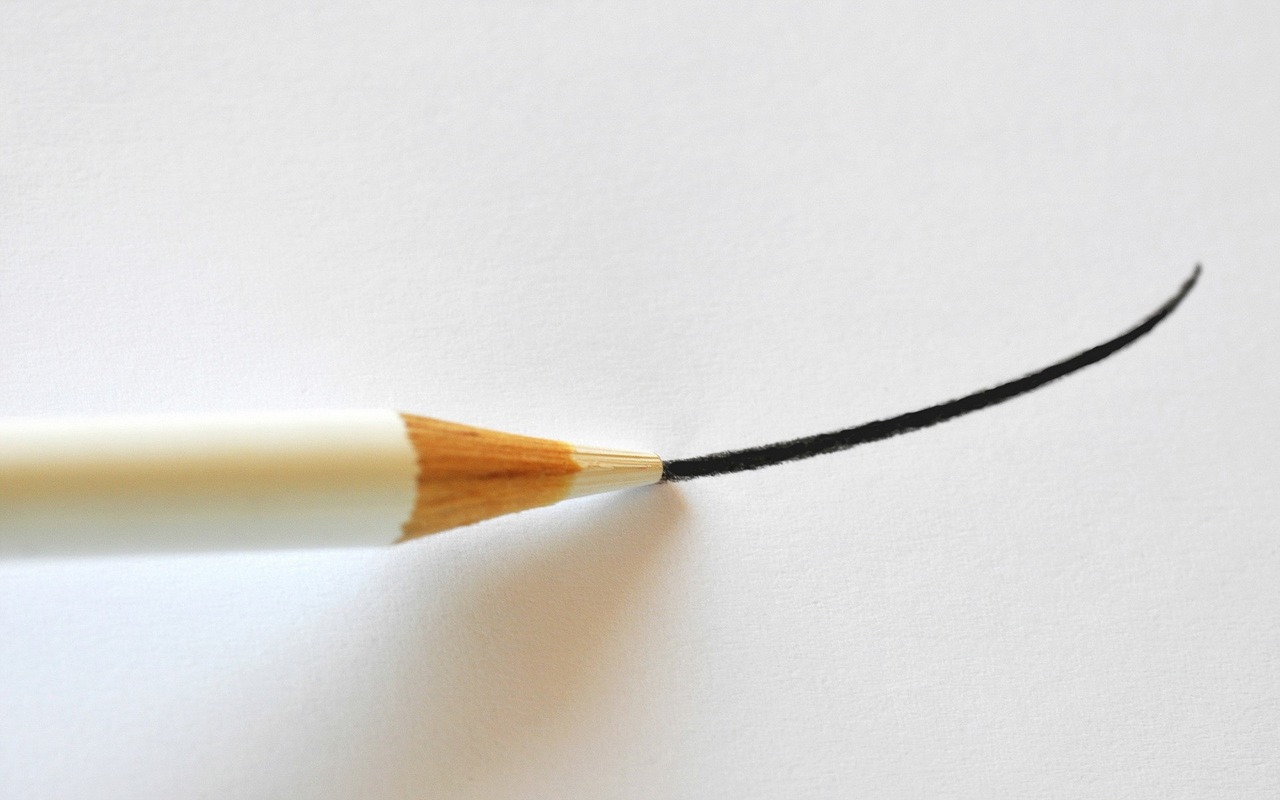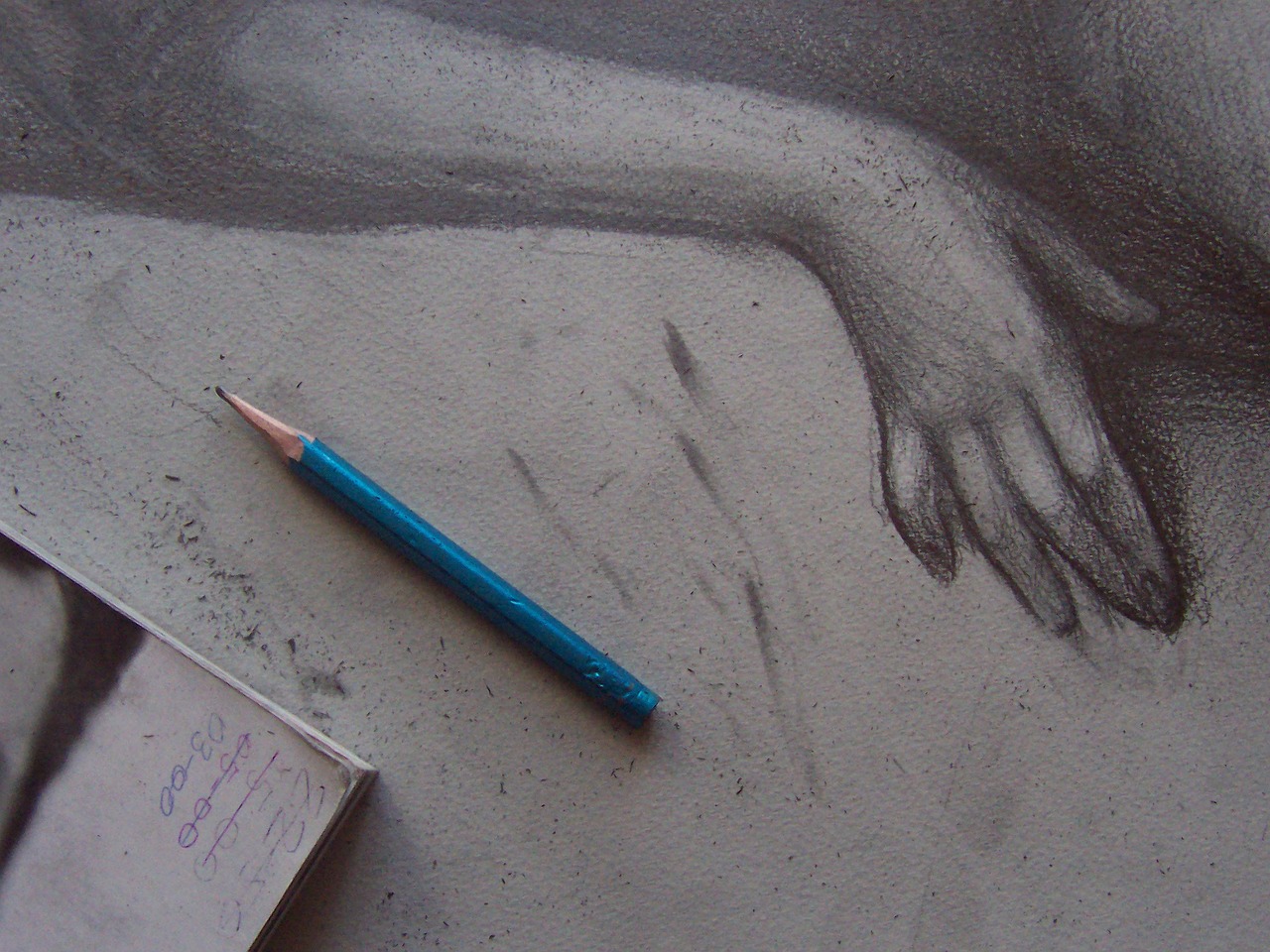Creating Beautiful Sketches with a Single Pencil
Have you ever picked up a pencil and felt the urge to create something beautiful? The simplicity of a single pencil can be incredibly liberating, allowing your creativity to flow without the distractions of color. In this article, we will explore the techniques, tips, and insights that can help you craft stunning sketches using just one pencil. Whether you're a beginner or a seasoned artist, you’ll discover how to harness the beauty and simplicity of monochrome artistry.
Sketching with a single pencil is like painting a masterpiece with just one brush. It challenges you to focus on light, shadow, and texture rather than getting lost in a palette of colors. With every stroke, you have the opportunity to create depth and emotion, transforming a blank page into a captivating visual story. So, grab your pencil, and let’s dive into the world of sketching!
Before we get into sketching techniques, it's essential to understand the different types of pencils available. Each pencil offers varied hardness and darkness, which directly impacts the texture and detail of your sketches. The common types include:
- H pencils: These are harder and produce lighter marks, ideal for fine lines and details.
- B pencils: Softer and darker, perfect for shading and creating rich contrasts.
- HB pencils: A balance between hardness and softness, great for general sketching.
Knowing these differences is crucial for achieving the desired effect in your artwork. For instance, if you're looking to create delicate details, a harder pencil like 2H might be your best bet. Conversely, for deep shadows, a softer pencil like 4B will do wonders. Experimenting with these options can lead to exciting discoveries in your sketches.
Now that we've covered the basics of pencil types, let’s delve into some essential sketching techniques that can elevate your artwork. Mastering these fundamental methods—like hatching, cross-hatching, and stippling—will allow you to add depth, shading, and texture, bringing your sketches to life.
Hatching involves drawing closely spaced parallel lines to create shading effects. This technique can dramatically enhance the dimensionality of your sketches. By varying the density of your lines, you can control how light interacts with your subject. For example, closely spaced lines can represent darker areas, while wider spacing can suggest lighter ones. It's a simple yet powerful tool in your sketching arsenal.
Using a single line hatching technique allows for subtle shading. This method is fantastic for creating light textures and can be effectively combined with other techniques for added depth. Imagine drawing a soft cloud or the delicate petals of a flower; single line hatching provides just the right touch.
Cross-hatching takes your sketches to the next level by layering lines in different directions. This technique is essential for creating rich shadows and highlights, adding realism to your drawings. Think of it as weaving a fabric of light and dark; the more layers you add, the more intricate and engaging your sketch becomes.
Stippling, on the other hand, uses dots to create shading and texture. While this technique requires patience, the results can be stunning and detailed, adding character to your sketches. Imagine creating a textured surface, like the rough bark of a tree or the soft fur of an animal, all with just a series of dots. It's a meticulous process, but the payoff is well worth it.
A well-composed sketch draws the viewer's eye and enhances the overall impact of your artwork. Understanding composition principles can significantly improve how your sketches are perceived. Consider the rule of thirds, which encourages a more dynamic and visually appealing layout. By positioning key elements effectively, you can create a more engaging composition.
Applying the rule of thirds can help you position key elements effectively within your sketch. This guideline divides your canvas into nine equal sections, suggesting that you place important elements along these lines or their intersections. This technique not only creates balance but also adds interest to your artwork.
Establishing a clear focal point is crucial as it directs viewer attention and enhances storytelling in your sketches. Consider how contrast and detail can emphasize this element within your composition. A strong focal point can transform a good sketch into a great one, making it resonate more with your audience.
Q: Can I use any pencil for sketching?
A: While you can use any pencil, different hardness levels will give you varied results. Experimenting with H, B, and HB pencils will help you find what works best for your style.
Q: How can I improve my sketching techniques?
A: Practice is key! Try different techniques like hatching and stippling regularly, and study the work of artists you admire to learn new methods.
Q: Do I need to use an eraser while sketching?
A: An eraser can be helpful, but it’s often better to embrace imperfections. They can add character to your sketches!

Understanding Pencil Types
When it comes to sketching, one of the most important factors that can influence your artwork is the type of pencil you choose. Pencils come in a variety of types, each with its own unique hardness and darkness, which directly impacts the texture and detail of your sketches. Understanding these differences is crucial for achieving the desired effect in your artwork. Think of it like choosing the right tool for a job; the right pencil can make all the difference in the world!
In general, pencils are graded on a scale that ranges from H (hard) to B (black), with F (fine point) in the middle. The H pencils produce lighter marks and are perfect for fine details, while B pencils yield darker marks, making them ideal for shading and bold lines. Here's a quick breakdown:
| Pencil Type | Hardness | Best Used For |
|---|---|---|
| H | Hard | Fine details, light lines |
| HB | Medium | General-purpose sketching |
| B | Soft | Shading, bold lines |
As you explore different pencil types, you might find that your preference leans towards a specific grade. Some artists swear by the versatility of HB pencils for everyday sketching, while others may prefer the rich, dark lines of a 6B pencil for dramatic shading. The key is to experiment and find out what works best for you.
Moreover, the quality of the pencil also plays a significant role. Higher-quality pencils often contain better graphite and can produce smoother, more consistent lines. So, while it might be tempting to grab the cheapest pack at the store, investing in a few quality pencils can significantly enhance your sketching experience.
In summary, understanding pencil types is a vital step in mastering the art of sketching. By recognizing the differences in hardness and darkness, you can better select the right pencil for your artistic needs. So, next time you sit down to sketch, take a moment to consider the tools at your disposal. They might just be the secret ingredient to elevating your artwork!

Essential Sketching Techniques
When it comes to sketching, mastering the fundamental techniques can make all the difference in transforming a simple drawing into a breathtaking piece of art. Whether you're a novice or a seasoned artist, understanding these techniques is essential for elevating your sketches. Let’s dive into some of the most important methods that can add depth, texture, and character to your artwork.
One of the most widely used techniques in sketching is hatching. This method involves drawing closely spaced parallel lines to create shading effects. The beauty of hatching lies in its versatility; by adjusting the density and direction of your lines, you can create a wide range of values and textures. For instance, if you want to depict a soft shadow, you might choose to space your lines further apart. On the other hand, for a darker area, you can layer your lines closer together. This manipulation of line density can significantly enhance the dimensionality of your sketches, making them come alive in the eyes of the viewer.
Within the realm of hatching, there are various techniques to explore. One such method is single line hatching, which is perfect for creating subtle shading. Imagine you're sketching a delicate flower; using this technique allows you to render soft textures that convey the fragility of the petals. By combining single line hatching with other methods, you can achieve a stunning interplay of light and shadow that adds depth to your work.
Another powerful technique is cross-hatching. This involves layering lines in different directions, which adds complexity and richness to your sketches. By crossing lines at various angles, you can create intricate shadows and highlights that give your drawings a sense of realism. Think of it as building a three-dimensional form on a two-dimensional surface; the interplay of these lines enhances the visual narrative of your artwork.
Next up is stippling, a technique that employs dots to create shading and texture. While it may require a bit more patience than hatching, the results can be absolutely stunning. Stippling allows for a unique level of detail that can add character to your sketches. For example, when drawing a textured surface like tree bark, using stippling can effectively mimic the natural irregularities and depth. This technique encourages you to take your time, but the payoff is worth it as your artwork develops a rich, tactile quality.
To sum it up, mastering these essential sketching techniques—hatching, cross-hatching, and stippling—can significantly enhance your artistic expression. Each method brings its own unique flavor to your sketches, allowing you to explore different styles and effects. As you practice and experiment with these techniques, you'll find that your ability to convey depth and emotion in your artwork will grow exponentially.
- What is the best pencil for sketching?
While it often depends on personal preference, a range of pencils from H (hard) to B (soft) can provide a good variety for sketching. A 2B pencil is a popular choice for its balance of darkness and control. - How can I improve my sketching skills?
Practice is key! Try to sketch daily, experiment with different techniques, and don’t be afraid to make mistakes. Joining a sketching group or taking classes can also provide valuable feedback and inspiration. - Is it necessary to use color in sketches?
No! Many artists find beauty in monochrome sketches. Using just one pencil can help you focus on form, shading, and texture without the distraction of color.

Hatching Techniques
Hatching is one of those magical techniques that can transform a simple sketch into a work of art. By drawing closely spaced parallel lines, artists can create a variety of shading effects that add depth and dimension to their drawings. It's like weaving a tapestry of light and shadow with just a pencil. The beauty of hatching lies in its simplicity, yet its impact can be profound. When you master this technique, you’ll discover that the way you manipulate line density can significantly enhance the dimensionality of your sketches.
Imagine you’re trying to depict a soft, glowing sunset. With a light touch, you can create delicate lines that suggest warmth and tranquility. On the other hand, if you’re sketching a dark, foreboding landscape, heavier lines can evoke a sense of mystery and tension. The possibilities are endless! To help you get started, here are some key points to consider when practicing hatching:
- Line Spacing: The distance between your lines will determine the intensity of your shading. Closer lines create darker areas, while wider spacing results in lighter tones.
- Angle of Lines: Varying the angle of your lines can add interest and complexity to your sketches. Experiment with different angles to see how they affect the overall look.
- Pressure Control: Adjusting the pressure you apply while drawing can yield different results. Light pressure creates subtle tones, while firm pressure produces bold lines.
One effective way to practice hatching is through single line hatching. This technique involves using a consistent, single direction for your lines. It’s perfect for creating soft textures and can be combined with other techniques for added depth. For instance, you might start with single line hatching for the background and then layer it with cross-hatching for the foreground, creating a rich and immersive scene.
Now, let’s dive into cross-hatching. This technique takes hatching to the next level by layering lines in different directions. It’s like building a brick wall of shadows! By crisscrossing your lines, you can create rich shadows and highlights that add realism to your drawings. This method is essential for depicting complex forms and can turn a flat sketch into a vibrant, three-dimensional piece of art.
In conclusion, mastering hatching techniques is a game-changer for any aspiring artist. It allows you to convey emotions and atmospheres through simple lines. Remember, practice makes perfect, so grab your pencil and start experimenting! You’ll be amazed at how much life you can breathe into your sketches with just a few strokes.
Q: What is hatching in sketching?
A: Hatching is a technique used in drawing where closely spaced parallel lines are drawn to create shading effects. It helps add depth and texture to sketches.
Q: How do I improve my hatching technique?
A: To improve your hatching, practice varying line spacing, angles, and pressure. Experiment with different styles and combine hatching with other techniques like cross-hatching.
Q: Can I use hatching in digital art?
A: Absolutely! Hatching can be applied in digital art using brushes that mimic pencil strokes. Many digital art programs allow you to create similar effects as traditional hatching.

Single Line Hatching
Single line hatching is a fundamental sketching technique that can transform your artwork from flat to fabulous! Imagine creating a beautiful landscape or a stunning portrait using nothing but a single pencil and a series of closely spaced parallel lines. This method is not just about making marks on paper; it's about understanding how light interacts with surfaces and how to convey that interaction through your art.
When you apply single line hatching, you're essentially drawing lines that run in one direction, which can create a sense of texture and depth. The key to mastering this technique is in the spacing and pressure you apply. By adjusting these two factors, you can achieve a range of effects. For instance, closely spaced lines can create darker areas that suggest shadow, while more spaced-out lines can convey lighter textures.
To illustrate this, consider the following tips for effective single line hatching:
- Vary Your Pressure: Light pressure will yield lighter lines, while heavier pressure will create darker marks. Experimenting with this can help you achieve the desired contrast in your sketches.
- Line Direction: The direction of your lines can affect the perception of form. For example, lines that follow the contour of an object can enhance its three-dimensionality.
- Practice Consistency: Keeping your line width and spacing consistent throughout your sketch can create a harmonious look, making your artwork more visually appealing.
One of the best things about single line hatching is its versatility. You can use it alone for a minimalist approach or combine it with other techniques, such as cross-hatching or stippling, to add complexity and richness to your work. This method is particularly effective for creating soft shadows and subtle textures, making it a favorite among artists who appreciate the beauty of simplicity.
In conclusion, mastering single line hatching is all about practice and observation. The more you sketch, the better you will understand how to manipulate your pencil to create stunning effects. So, grab your pencil, find your inspiration, and start experimenting with this technique. You might be surprised at how much depth and character you can bring to your sketches with just a single line!

Cross-Hatching Techniques
Cross-hatching is like the secret sauce of sketching, adding depth and dimension that can transform a simple line drawing into a captivating piece of art. Imagine you're creating a landscape; the sunlight filtering through the trees can be depicted with delicate cross-hatching, where lines intersect to create shadows and highlights. This technique is not just about drawing lines; it's about storytelling through your artwork. Each stroke contributes to the narrative, guiding the viewer's eye across the page.
To master cross-hatching, you need to understand the relationship between line density and shading. The closer your lines are, the darker the area will appear. Conversely, spacing them out creates lighter shades. Think of it as adjusting the volume on a speaker—tightening the lines increases the intensity of the sound, while loosening them softens it. Here’s a quick overview of how to effectively apply cross-hatching:
| Line Density | Effect |
|---|---|
| High Density (lines close together) | Creates darker areas and rich shadows |
| Low Density (lines spaced apart) | Generates lighter areas and subtle highlights |
When you start cross-hatching, it's essential to consider the direction of your lines. By varying the angle and direction, you can create a more dynamic and interesting texture. For example, if you're sketching a round object, you might start with horizontal lines and then layer vertical lines over them, mimicking the curvature of the form. This technique not only adds realism but also invites the viewer to explore the piece more closely.
Another exciting aspect of cross-hatching is its versatility. You can use it in various styles, from realistic portraits to abstract designs. It’s like having a toolbox where each tool serves a different purpose. For instance, if you want to create a soft, atmospheric feel, you might opt for light, airy cross-hatching. On the other hand, if you're aiming for a dramatic effect, you could employ heavy, dark cross-hatching to evoke strong emotions.
In conclusion, mastering cross-hatching techniques can significantly elevate your sketching skills. It's not just about filling in spaces; it's about creating a visual dialogue that resonates with the viewer. So grab your pencil, experiment with different line densities and directions, and let your creativity flow! Remember, practice is key, and soon enough, you'll find your unique voice through the art of cross-hatching.
- What is the difference between hatching and cross-hatching? Hatching involves drawing parallel lines, while cross-hatching adds another layer of lines intersecting those, creating more complex shading.
- Can I use cross-hatching in digital art? Absolutely! Many digital art programs offer tools that mimic traditional cross-hatching techniques.
- How can I improve my cross-hatching skills? Practice regularly, experiment with different line weights and densities, and study the works of artists who excel in this technique.

Stippling for Texture
Stippling is one of those magical techniques that can transform a simple sketch into a mesmerizing piece of art. Imagine creating an entire landscape or a portrait using nothing but tiny dots; it sounds almost surreal, right? This method relies on the placement and density of dots to create shading, texture, and depth. The beauty of stippling lies in its ability to convey intricate details without the need for elaborate tools or colors. Just your pencil and a bit of patience can lead to stunning results.
When you start stippling, you might feel like you’re playing a game of connect-the-dots, but with a twist. Each dot you place contributes to the overall tone and texture of your artwork. The key is to understand how to manipulate the density of your dots. For instance, placing them closer together creates darker areas, while spacing them out results in lighter tones. This principle is similar to how a photograph captures light and shadow—it's all about contrast.
One of the challenges of stippling is the time it takes to achieve the desired effect. However, this is also what makes it rewarding. The process can be meditative, allowing you to focus on the rhythm of your hand as it moves across the paper. Just like a musician finds their groove, you’ll find your flow in the meticulous placement of each dot. And as you work, you’ll notice how your image begins to emerge, almost like magic!
Here are some tips to enhance your stippling technique:
- Start Light: Begin with light pressure on your pencil to create subtle dots. You can always go back and darken areas later.
- Vary Your Dot Size: Use different pressures to create varying sizes of dots. Larger dots can add emphasis, while smaller ones can fill in details.
- Practice Patience: Stippling is a slow process, so take your time. Enjoy the journey rather than rushing to the finish line.
As you become more comfortable with stippling, consider incorporating it into your sketches in combination with other techniques. For example, you can use stippling for texture in the background while employing hatching for the foreground elements. This layering can create a dynamic and rich visual experience, pulling the viewer into your artwork.
In summary, stippling is not just a technique; it's an art form that invites you to explore the relationship between light and shadow. By mastering this method, you’ll add a unique flair to your sketches, making them not only visually appealing but also rich in detail and texture. So grab your pencil, start dotting, and let your creativity flow!
Q1: What type of pencil is best for stippling?
A1: A medium to hard pencil (like a 2H or H) is often recommended for stippling, as it allows for fine dot placement without smudging.
Q2: Can I use stippling for colored sketches?
A2: Absolutely! While stippling is often done in monochrome, you can use colored pencils to create vibrant and textured artwork.
Q3: How long does it typically take to complete a stippling piece?
A3: The time varies greatly depending on the size and detail of the piece. A small sketch may take a few hours, while a larger, more detailed work could take days or even weeks.

Composition and Layout
When it comes to sketching, composition and layout are the unsung heroes of impactful artwork. Think of your sketch as a stage, where every element plays a role in telling a story. A well-composed sketch doesn't just capture the subject; it invites the viewer in and engages them on a deeper level. The way you arrange your elements can create a sense of movement, balance, and harmony, making your artwork not only visually appealing but also emotionally resonant.
One of the fundamental principles of composition is the Rule of Thirds. Imagine dividing your sketch into nine equal parts with two vertical and two horizontal lines. The idea is to place the most important elements of your sketch along these lines or at their intersections. This technique encourages a more dynamic layout and can lead to a more balanced and interesting composition. For instance, if you’re sketching a landscape, placing the horizon along the top third line can create a sense of depth and space.
Another vital aspect of composition is establishing focal points. A focal point is the area of your sketch that draws the viewer's eye first. It’s like the star of the show! To create a strong focal point, think about using contrast, detail, and color (even in monochrome sketches, varying pencil pressure can create contrast). For example, if you're sketching a portrait, you might want to emphasize the eyes or the expression, allowing these elements to shine while the rest of the sketch provides a supportive background.
Additionally, consider the negative space in your sketches. Negative space refers to the area surrounding your main subjects. By paying attention to this space, you can enhance the overall composition. It’s like the silence in a song; it allows the main melody to stand out. When you leave some areas of your sketch less detailed or lighter, it can make the focal points pop even more. This technique can also convey a sense of movement or stillness, depending on how you choose to use it.
To further illustrate these concepts, here’s a simple table that summarizes key composition principles:
| Principle | Description |
|---|---|
| Rule of Thirds | Divides the sketch into nine equal parts to position key elements dynamically. |
| Focal Points | Highlights areas that draw the viewer’s attention through contrast and detail. |
| Negative Space | Utilizes surrounding space to enhance the main subjects and create balance. |
In conclusion, mastering composition and layout is essential for creating sketches that not only look good but also resonate with viewers. By applying techniques like the Rule of Thirds, establishing clear focal points, and considering negative space, you can elevate your sketches from mere drawings to captivating pieces of art. Remember, every line you draw is part of a larger narrative, so make sure your composition tells that story effectively!
- What is the Rule of Thirds? The Rule of Thirds is a composition guideline that suggests dividing your canvas into thirds both horizontally and vertically, placing key elements along these lines or at their intersections.
- How do I create a focal point in my sketch? You can create a focal point by using contrast, detail, and varying pencil pressure to draw attention to specific areas of your sketch.
- What is negative space? Negative space refers to the area around and between the subjects of your sketch. It plays a crucial role in composition by enhancing the main elements and providing balance.

Rule of Thirds
The is a fundamental principle in sketching that can significantly enhance your artwork's composition. Imagine dividing your canvas into a grid of nine equal parts, like a tic-tac-toe board. This simple framework allows you to strategically position your subjects along the lines and at their intersections, creating a more dynamic and engaging visual experience. But why does this matter? Well, when you place focal points at these intersections, you naturally draw the viewer's eye, leading to a more balanced and interesting piece.
For instance, if you're sketching a landscape, consider placing the horizon line along the top or bottom third of your canvas rather than dead center. This subtle shift can transform a mundane scene into something captivating, giving it a sense of depth and movement. Similarly, if you're sketching a portrait, positioning the subject's eyes along the upper horizontal line can create a strong connection with the viewer, making the artwork feel alive.
It's also essential to think about the negative space in your sketches. By leaving areas of your canvas empty, you can lead the viewer's eye towards the focal points more effectively. This technique not only creates balance but also adds a layer of intrigue, inviting the audience to explore the entire piece instead of just fixating on one area. Remember, art is not just about what you include; it's also about what you choose to leave out.
To further illustrate the Rule of Thirds, here's a simple table that outlines how to apply it in your sketches:
| Element | Placement | Effect |
|---|---|---|
| Horizon Line | Top or Bottom Third | Creates depth and interest |
| Focal Points | Intersections of the Grid | Draws viewer's attention |
| Negative Space | Surrounding the Subject | Enhances focus and balance |
In conclusion, mastering the Rule of Thirds can elevate your sketches from ordinary to extraordinary. It's a simple yet powerful technique that encourages you to think critically about composition and how to guide the viewer's eye through your artwork. So, next time you pick up your pencil, remember to visualize that grid and see how it can transform your creative process!
- What is the Rule of Thirds? It is a compositional guideline that suggests dividing your canvas into thirds both horizontally and vertically, allowing for better placement of focal points.
- How do I apply the Rule of Thirds in my sketches? Position key elements along the lines or at their intersections to create a more dynamic composition.
- Does the Rule of Thirds apply to all types of art? While it's most commonly used in visual arts, the principle can be applied to photography, design, and more.
- Can I break the Rule of Thirds? Absolutely! While it’s a useful guideline, breaking the rule can lead to unique and innovative compositions.

Focal Points
This article explores techniques, tips, and insights into crafting stunning sketches using just one pencil, highlighting the beauty and simplicity of monochrome artistry.
Different pencil types offer varied hardness and darkness, impacting your sketch's texture and detail. Knowing these differences is crucial for achieving the desired effect in your artwork.
Mastering fundamental sketching techniques like hatching, cross-hatching, and stippling can elevate your artwork. These methods allow for depth, shading, and texture, bringing your sketches to life.
Hatching involves drawing closely spaced parallel lines to create shading effects. Understanding how to manipulate line density can significantly enhance the dimensionality of your sketches.
Using a single line hatching technique allows for subtle shading. This method is great for creating light textures and can be effectively combined with other techniques for depth.
Cross-hatching adds complexity to your sketches by layering lines in different directions. This technique is essential for creating rich shadows and highlights, adding realism to your drawings.
Stippling uses dots to create shading and texture. This technique requires patience but can result in stunning, detailed effects that add character to your sketches.
A well-composed sketch draws the viewer's eye and enhances the overall impact. Understanding composition principles will help you create balanced and engaging artwork.
Applying the rule of thirds can help you position key elements effectively within your sketch. This guideline encourages a more dynamic and visually appealing layout.
Establishing a clear focal point in your sketches is like setting the stage for a captivating story. It directs the viewer's attention, guiding them through the narrative you wish to convey. Think of your focal point as the protagonist in a play—it should stand out and draw the audience in. To achieve this, consider using contrast in your shading and detail. For instance, if your focal point is a flower in a garden, you might want to render it with intricate details and darker shading compared to the surrounding leaves, which could be more muted.
Moreover, the placement of your focal point can significantly affect how your sketch is perceived. Utilizing the rule of thirds can help you position this element effectively. Imagine dividing your sketch into a grid of nine equal parts; placing your focal point at one of the intersections can create a more dynamic composition. This technique not only enhances visual interest but also encourages the viewer's eye to explore the surrounding elements.
In addition to contrast and placement, consider the use of leading lines. These are lines within your sketch that naturally guide the viewer's eye toward the focal point. For example, a pathway or a branch can serve as a leading line, drawing attention to the main subject. By combining these techniques, you can create a sketch where the focal point is not just an isolated element but a vital part of a harmonious composition.
- What is the best pencil for sketching? The best pencil often depends on your style, but a range of pencils from 2H to 6B can provide versatility for various techniques.
- How can I improve my sketching skills? Practice regularly, study different techniques, and don't hesitate to seek feedback from fellow artists.
- Is it necessary to use color in sketches? Not at all! Many artists create stunning pieces using just one pencil, focusing on shading and texture.
Frequently Asked Questions
- What type of pencil should I use for sketching?
Choosing the right pencil is essential for achieving the desired effects in your sketches. Generally, a range of pencils from H (hard) to B (soft) will give you versatility. For fine details, use harder pencils, while softer pencils are great for darker, richer lines and shading.
- How can I improve my hatching technique?
Improving your hatching technique takes practice! Start by experimenting with the spacing and angle of your lines. Try different densities to see how they affect the shading. Remember, the closer the lines, the darker the area will appear, so play around with this to create depth in your sketches.
- What is the rule of thirds and how does it help in sketching?
The rule of thirds is a compositional guideline that suggests dividing your canvas into nine equal sections with two horizontal and two vertical lines. Positioning key elements along these lines or at their intersections can create a more balanced and engaging sketch, guiding the viewer's eye naturally through your artwork.
- Can I create detailed sketches using just one pencil?
Absolutely! Using just one pencil can actually enhance your skills and creativity. Techniques like hatching, cross-hatching, and stippling allow you to create a wide range of textures and depths, proving that simplicity can lead to stunning results.
- What are some tips for creating a focal point in my sketches?
To create a strong focal point, consider using contrast in value, detail, or color (if applicable). Make sure this area is more detailed or darker than the surrounding elements to draw the viewer's attention. Think of it like spotlighting a star in a performance!
- How long does it take to master sketching techniques?
Mastering sketching techniques varies from person to person. With consistent practice, you can see improvement in a matter of weeks. The key is to keep experimenting and not to get discouraged—every sketch is a step toward mastery!



















